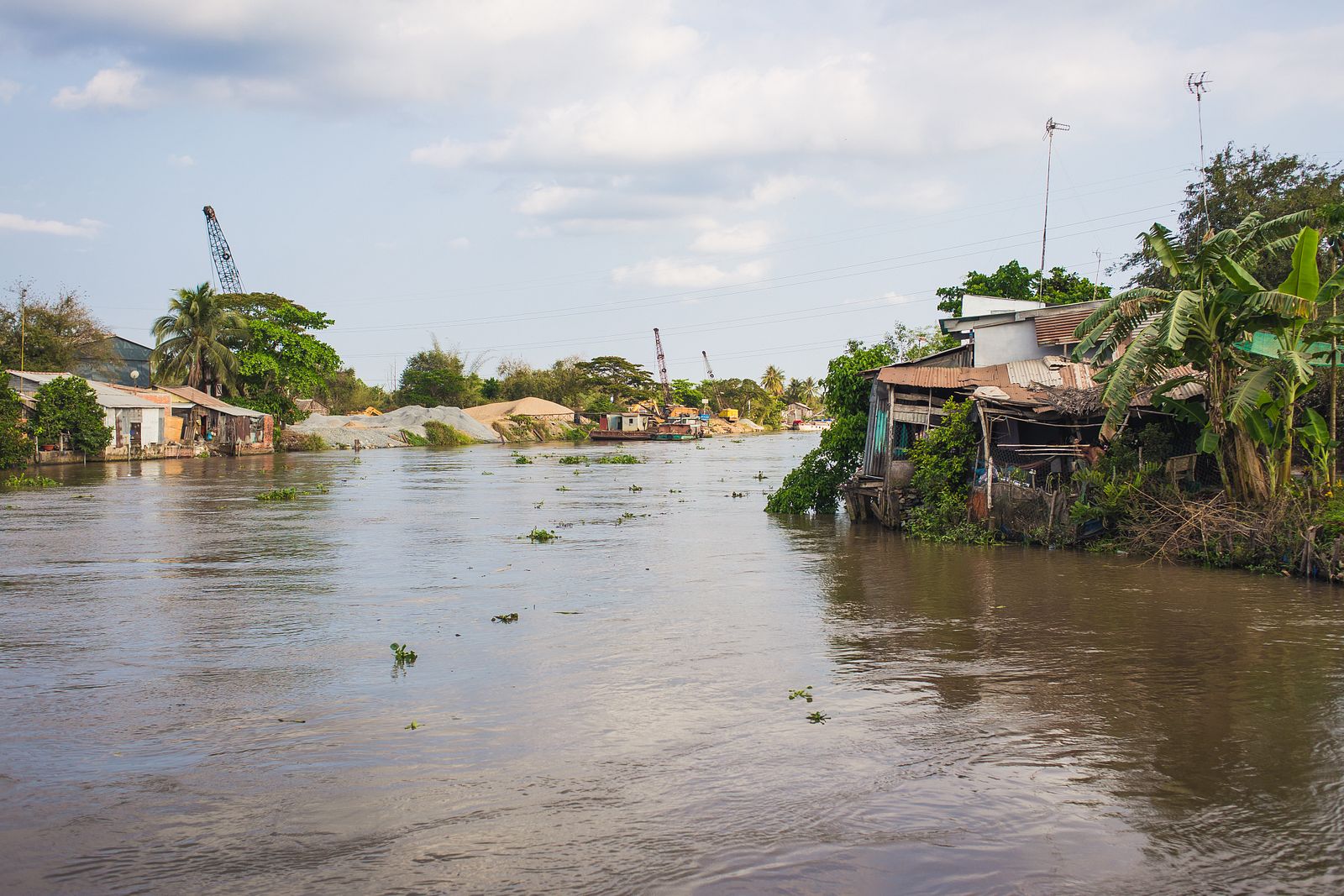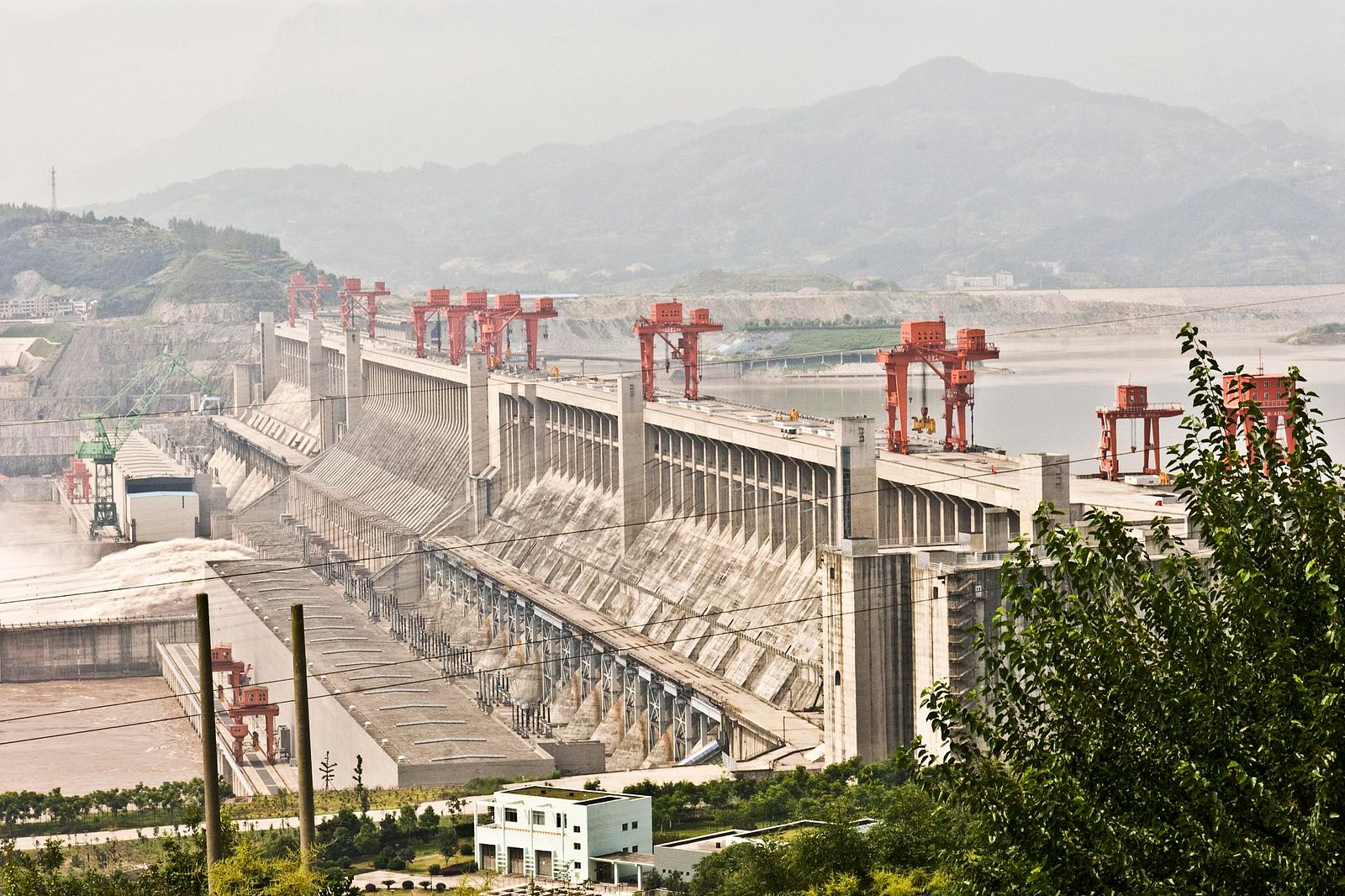Contrary to its public statements, recent data shows that China has held back water on the upper Mekong River while its downstream neighbors faced critically low water levels.
A new report from Eyes on Earth used satellite data from 1992 to 2019 and daily river height data from Chiang Saen in northern Thailand to determine how dams built on the Upper Mekong, called the Lancang River in China, have disrupted the vital waterway's natural flow.
By combining these data sets, Alan Basist and Claude Williams, the report's authors, "calculated the quantity of water that would naturally flow versus the measurement at the Chiang Saen gauge."
This difference was then used to estimate how much water was either being held back in reservoirs in China, or used for other purposes in the country.
In their executive summary, Basist and Williams write that, "Currently, 126.44 meters of river height is missing at the gauge in Chiang Saen over the 28-year record."

A map showing above-average rainfall on the Lancang River last year, and much lower precipitation levels in most of the Mekong Basin. Graphic via The Stimson Center.
Much of this difference has accumulated since 2012, when the Nuozhadu Dam was completed. Six more dams have been built on the Lancang since then, and the downstream impact of these structures was particularly severe last year.
"One of the greatest consequences occurred in 2019, when the Lower Mekong recorded some of its lowest river levels ever throughout most of the year," the report notes. This is despite the fact that satellite data showed above-average water flow on the Upper Mekong.
In short, China held back water during the dry season so that its dams could produce electricity, and even more was held back during the wet season, when the Mekong region experienced record-low rainfall levels.
"The severe lack of water in the Lower Mekong during the wet season of 2019 was largely influenced by the restriction of water flowing from the Upper Mekong during that time," Basist and Williams write. "Cooperation between China and the Lower Mekong countries to simulate the natural flow cycle of the Mekong could have improved the low flow conditions experienced downstream between May and September of 2019."
Brian Eyler, Southeast Asia Program Director at The Stimson Center in Washington D.C. and author of Last Days of the Mighty Mekong, told Saigoneer in an email that these conditions hurt millions of people living along the river.
"During the dry season and periods of low precipitation, China's upstream can contribute between 40-50% of the Mekong's total flow...to be sure, China's upstream water releases only impact areas along the mainstream...such as Thailand's northeastern irrigation projects, the Tonle Sap Lake in Cambodia, and the Mekong Delta," he said.
"During the 2019 traditional monsoon season (which failed to produce monsoons due to an El Nino weather pattern), China's unprecedented restriction of water undeniably impacted the areas mentioned above and reduced the livelihoods of tens of millions of people living there."
Eyler also warned of China's efforts to control flood pulses on the river, which have formed the basis of life on its banks for thousands of years.

A chart from The Stimson Center showing expected Mekong water levels (blue) and actual river levels (orange) from 2010 to this year.
"The Lancang Mekong Water Resources Coordination Center in Beijing is now promoting a mantra of flood control and drought relief for the Lower Mekong," he explained. "Drought relief is always welcomed, but flood control is dangerous and risky in a human landscape that relies on floods for its existence. China's view is informed by a long historical record of floods wiping out cities and killing hundreds of thousands on their coastal flood plains and is beginning to transfer this view onto the Lower Mekong, much like the way a teacher transfers his teaching onto his pupils."
In the future, Basist and Williams hope to extend their research to further reaches of the Mekong.
"We are interested in extending the study to a larger part of the Mekong River basin in the future, in order to learn how the various tributaries and dams contribute to the larger flow downstream," they said in an email. "To extend the study further downstream requires additional information about tributaries, river gauges, dams and reservoirs built along the main stem and tributaries of the basin."
While the evidence from 2019 is damning, earlier this year, China announced that it was going to release water from its hydropower reservoirs in order to help downstream areas facing low water levels.
According to Eyes on Earth data, however, these releases had little impact.
"Findings indicate that although the restriction of flow by the dams certainly decreased during the end of 2019 and early 2020, nonetheless, the flow coming from the upper basin still did not replicate natural flow during this period of time," the researchers added.
Compounding these low water levels, the Mekong Delta is facing its worst-ever drought, along with record-breaking levels of salinity as salt water pushes upstream from the East Sea.
[Top photo via Flickr user Water Alternatives]















